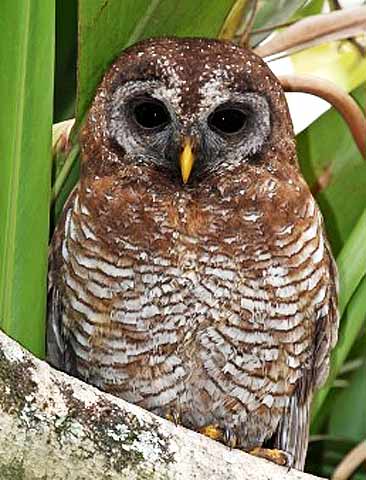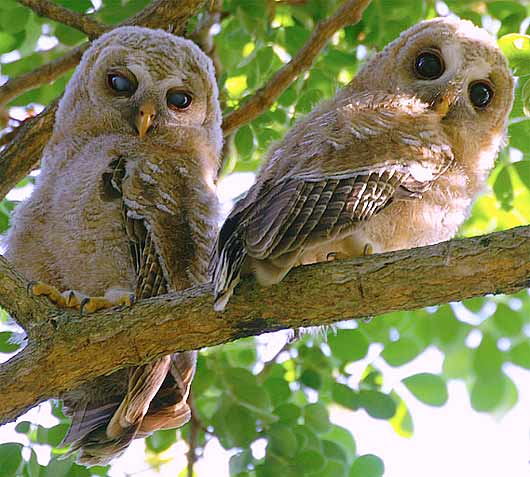African Wood Owl – Common Earless Old Word Owl

The African wood owl is a rare member of the Strix genus (earless wood owls) that resides in the Old World. Its foreparts above and below are very dark brown, lightly spotted with white and there are a few large white spots on the shoulders and inner parts of the wing. The belly is pale buff, heavily streaked with white and dark brown; the face is dark, with conspicuous white between the eyes and the beak and around the eyebrows. Since they are “earless” you will not see any feather tufts around the ear area. The sexes are very similar in appearance. Juveniles are also similar but paler.

This wood owl is the commonest owl in forests and woodlands in Africa south of the Sahara. The birds are variable in color throughout the region, from blackish brown to deep red-brown. The highland forms have slightly more feathering on the toes than the others, and those in the rainforest are redder, their color ranging from yellow-brownish to a darker but still light brown. In Zaire juveniles are tawny above, barred with white, and white barred with tawny on the breast.
These African birds are similar in size to the related New World wooded owl species, being 12-13.2 inches (30.5 to 33.5 cm) long. They frequent forest edges, and woods and dense bushes along the banks of streams, sometimes coming close to villages. They have even become established among the suburbs of some South African towns. By night they hunt mice, reptiles, small birds, frogs but mainly insects such as grasshoppers, crickets and caterpillars. By day they sit motionless on tree branches, and are not easily disturbed. Several calls have been described, the most frequent being a distinctive call that is reported to sound like the bird is saying “who are you”. The usual clutch of one, two, sometimes three eggs is laid in a tree cavity, but sometimes on the ground. In South Africa most eggs are laid in the period of August through October.

